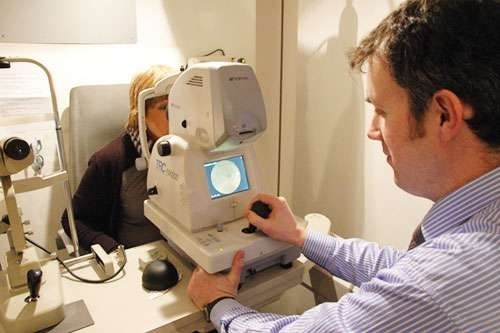 US researchers said they have found a new way to restore the eyesight in patients who have a blinding eye disease caused by diabetes.
US researchers said they have found a new way to restore the eyesight in patients who have a blinding eye disease caused by diabetes.
The key is to block a second blood vessel growth protein, along with one that is already well-known, when it comes to treating and preventing diabetic retinopathy, the most common diabetic eye disease, they reported in the US journal Proceedings of the National Academy of Sciences, Xinhua news agency reported.
Diabetic retinopathy occurs when the normal blood vessels in the eye are replaced over time with abnormal, fragile blood vessels that leak fluid or bleed into the eye, damaging the light- sensitive retina and causing blindness.
Forty to 45 percent of Americans with diabetes have diabetic retinopathy, according to the US National Eye Institute.
Laser-sealing eye blood vessels can save central vision, but this often sacrifices peripheral and night vision, according to the researchers at the Johns Hopkins University and the University of Maryland.
Several recently developed drugs — bevacizumab, ranibizumab and aflibercept — can help treat these blood vessels by blocking the action of VEGF, a so-called growth factor released as part of a chain of signals in response to low oxygen levels, which stimulates the growth of new, often abnormal, blood vessels.
But studies have shown that although these drugs slow progression to proliferative diabetic retinopathy, it does not reliably prevent it, said lead author Akrit Sodhi, an assistant professor of ophthalmology at the Johns Hopkins University School of Medicine.
To find an explanation, levels of VEGF in samples of fluid from the eye taken from healthy people, people with diabetes who did not have diabetic retinopathy and people with diabetic retinopathy of varying severity were tested.
While levels of VEGF tended to be higher in those with proliferative diabetic retinopathy, some of their fluid had less VEGF than did the healthy participants.
But even the low-VEGF fluid from patients with proliferative diabetic retinopathy stimulated blood vessel growth in lab-grown cells.
“The results suggested to us that although VEFG clearly plays an important role in blood vessel growth, it’s not the only factor, ” Sodhi said in a statement.
A series of experiments in lab-grown human cells and mice revealed a second culprit, a protein called angiopoietin-like 4.
When the researchers blocked the action of both VEGF and angiopoietin-like 4 in fluid from the eyes of people with proliferative diabetic retinopathy, it markedly reduced blood vessel growth in lab-grown cells.
Sodhi suggested if a drug can be found that safely blocks the second protein’s action in patients’ eyes, it might be combined with the anti-VEGF drugs to prevent many cases of proliferative diabetic retinopathy.
The team is now investigating whether angiopoietin-like 4 might also play a role in other eye diseases, such as macular degeneration, which destroys the central portion of the retina.